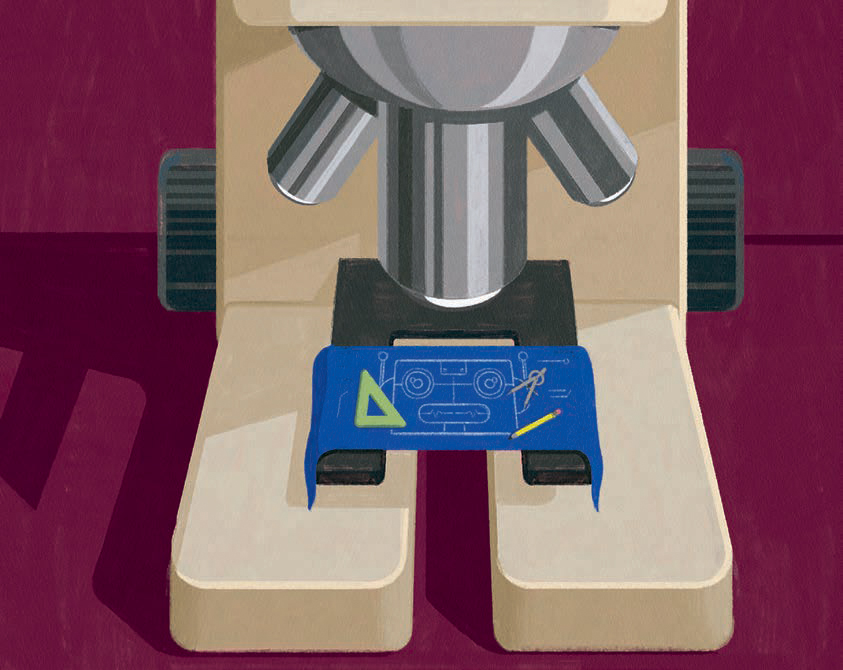
Inside the Miskin Lab
Cell-Sized Robots
The Challenge
Since their creation, robots and robotic devices have been used to go places and complete tasks that humans have deemed too “dull, dirty or dangerous.” However, there is not a way for humans to observe, explore or interact with the world of cells and cell-sized matter at scale using robotic devices.
The Status Quo
While for fifty years electronics have been getting smaller and smaller, smarts are only half the story; robots also need bodies and parts that move. Until recently, nobody knew exactly how to build the small actuators that are needed to construct a microscale robot.

Marc Miskin
Assistant Professor in Electrical and Systems Engineering
The Miskin Lab’s Fix
Members of the research team led by Marc Miskin, Assistant Professor in Electrical and Systems Engineering, are harnessing new nanofabrication techniques to create robots that can operate on the same scale as cells and could therefore be used to interact with biology on a cellular level. Their robots can be mass-produced on a silicon wafer using the same techniques used to manufacture microchips, cost less than a cent each and are able to be injected through a syringe.
Measuring 70 microns across, about the width of a human hair or the size of a single-celled paramecium, the devices are too small to be seen with the naked eye, but can be made to move using onboard electronics.
A circuit board serves as the device’s torso and brain, and photovoltaic cells (think solar panels) decorate its surface. To enable movement, the group developed a new class of actuators called surface electrochemical actuators, or SEAs, which are platinum strips with rigid panels that serve as jointed legs. The legs fold at the joints when a charge passes through them because atoms from the surrounding water attach themselves to the surface of the platinum when it’s charged, allowing the robot to move. Put together, these pieces allow for a tiny walking robot: Hit the solar cells with a laser and it passes electricity to the legs, causing them to flex and the robot to walk through its fluidic environment.
In developing and deploying these robots, researchers could unlock a potential treasure trove of diagnostic and treatment capabilities. “We now finally have a match in size between cells and robots that you can communicate with and command,” says Miskin. “Biology is still leaps and bounds more complicated than electronics, but now that there is a foothold in this completely different dimension, what new medicine can you do that you couldn’t before?”
The team continues to improve upon their design, and is currently building more complex circuitry for sensing, computation and control to create robots that could be programmed to carry out specific tasks (like following a temperature gradient) automatically. Future plans include building robots specially designed to operate in the body, figuring out how they can work together as a swarm, or developing new tiny sensors to learn about the world around them.
Text by Olivia McMahon / Photo by Kevin Monko/ Illustration by Pete Ryan
